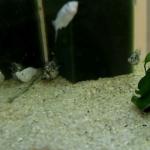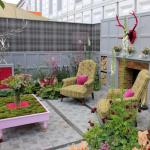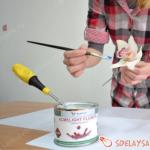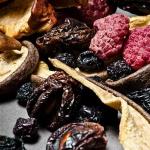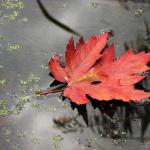Hydrangea: the best species and varieties for growing in the Moscow region
Hydrangea is one of the most popular flowering shrubs. Gardeners have shown a particularly keen interest in this crop over the past years. It was caused by the growing popularization of landscape decor and the appearance on the floristic market of new, interesting varieties of this plant, which has long enjoyed success in Europe, Asia, North and South America.
Like any other plant, hydrangea requires some attention. It so happens that a beautiful flowering bush bought in a store gets sick after planting or does not recover after a frosty winter. To prevent the flower from getting sick, you need to choose the variety that is most suitable for a particular region.
Growing hydrangeas in the Moscow region
Hydrangeas are plants of a mild temperate climate. The largest number of species grows naturally in Japan and China. This explains the conditions of her agricultural technology in Russian gardens. The Moscow region belongs to the 4th climatic zone, or, as it is also called, the frost resistance zone. The thermometer here in winter drops to -35 degrees Celsius. Sudden thaws also occur in the middle of winter. They often do more damage to plants than a stable cold temperature.
In order for the hydrangea bush not only to survive in the proposed climate, but to develop well and please with lush flowering, you need to choose the right variety and provide it with optimal conditions in the garden.
Types and varieties
The genus Hydrangea (hydrangea) unites more than 30 species of this shrub plant. Since most of them are thermophilic, only a fraction of this large family is grown on Russian sites.
Most of all, tree-like, paniculate and large-leaved hydrangeas are suitable for the climatic conditions of the Moscow region. Each of these species have their own specific requirements for growing conditions.
Arborescens
The most popular type of the family in the territory of Central Russia, which can often be found on personal plots and in parks. It is a wide (1.5 - 2 meters) deciduous shrub about 2 meters high. Leaves are oval with a sharp tip and denticles along the edge, located opposite. From June-July, the plant is covered with hemispherical inflorescences - at first white, and then, as it blooms, changing the shade to light green. Treelike hydrangea is one of the most winter-hardy. It is thanks to this property that it can be grown near Moscow without shelter for the winter. Currently, varieties have appeared with pink flowers.
The most popular are:
- 1. Annabelle (Anabel) is a compact hydrangea (up to 1.5 meters high), has large capitate snow-white inflorescences. During flowering, the bush has a tendency to fall apart due to the weight of the bracts.
- 2. Bella Anna (Bella Anna or "beautiful Anna") - a novelty among tree hydrangeas, blooming deep crimson, turning into pink.
- 3. Hayes Starburst (Hayes Starburst). This name can be translated as "constellation". The numerous double flowers of this variety really look like snow-white clusters of stars. Stunted (about 1 m), completely frost-hardy.
- 4. Invincibelle Spirit (Invincibel Spirit) - the first pink-flowered treelike hydrangea. Her name (literally "invincible") - "Invincible Spirit" - she received in honor of the charitable foundation for the fight against breast cancer. At the beginning, the inflorescences have a raspberry hue, then gradually acquire a deep pink and pinkish green color.
- 5. Sterilis (Sterilis) - a variety with large (up to 25 cm in diameter) hemispherical white inflorescences. Branches sometimes bend under their weight, in which case the bush is tied up.
- 6. Strong Annabelle (Incrediball) has huge caps (up to 40 cm in diameter) of white flowers with a delicate lemon shade on strong, powerful shoots that withstand them well. The variety was bred recently, but is already very popular.
- 7. White Dome (White Dome) - "white dome" - has umbrella-shaped inflorescences: along the edge - large sterile (sterile) flowers, and in the middle - many small fertile (fertile). The plant has an attractive shape, does not crumble during flowering. Height - up to 1.3 meters.
In especially harsh winters, the aboveground part of the tree hydrangea bushes can completely freeze over. But this will not affect flowering in any way, since this species forms inflorescences on the shoots of both the past and the current year (on new young growths).
Paniculata (paniculata)
All representatives of this species are shrubs with woody shoots. Leaves are oblong, loose, with hard pubescence. Inflorescences are most often of an oblong paniculate shape, from which the name of the species originated. More sun-resistant than other varieties. Quite hardy, although young plants of some varieties need shelter.
The color palette is wider, the bracts change shades throughout the season, which lasts from July to September-October.
- 1. Bombshell (Bombshell - "Bomb"). This compact plant can rightfully be called both a bomb and a bolt from the blue in accordance with the English equivalent. Throughout the summer, it literally explodes with an abundance of white inflorescences. Their shape is rather unusual for panicle hydrangeas: it is a truncated cone with a rounded top. The low height - up to 80 cm - allows the use of Bombshell in container culture.
- 2. Candlelight (Candlelight - "Light of a burning candle") - an interesting variety with dark cherry shoots. Pyramidal inflorescences from lemon gradually turn into white with a creamy reflection. Compact (up to 1.2 - 1.5 m).
- 3. Grandiflora (Grandiflora or large-flowered) is considered one of the oldest varieties. It is a tall (about 2-3 meters) bush with white oblong (pyramid-shaped) inflorescences of a creamy white hue, turning pink in autumn. This variety is prized for its frost resistance and unpretentiousness. Plants of the standard form - a trunk with a lush crown, look interesting in landscape compositions.
- 4. Limelight (Limelight, "lemon light") all summer pleases with flowers of a pleasant lemon shade. By autumn, the bracts gradually turn pink. Height - 2 meters.
- 5. Little Lime (Little Lime - "Little lime") - miniature variety "Limelight" with lush flowering and compact growth. The lowest of the paniculata (up to 70 cm), it is unpretentious and frost-resistant. Can be successfully grown in decorative pots.
- 6. Magical Moonlight (Magic Moonlight - "Magic light of the moon") Sprawling bush, grows up to 2-3 meters. The peculiarity of the variety is dense inflorescences of a gentle lemon shade, turning into pale pink as it blooms.
- 7. Phantom (Phantom, "ghost") attracts with huge inflorescences reaching 30 centimeters or more, as well as a pleasant honey aroma that attracts insects to the garden. A powerful bush grows up to 2 meters and more.
- 8. Pink Diamond (Pink Diamond - "Pink Diamond") blooms profusely with large (up to 25 - 30 cm long) inflorescences. Their color is cream, as it fades, it becomes deep pink to cherry. Young plants need to be covered in the first years after planting.
- 9. Pinky Winky is a very effective variety that has become a favorite of flower growers for its attractive inflorescences. They have the shape of a pyramid with a sharp top and are painted in various shades of pink and crimson. The lower flowers turn crimson while the tip of the inflorescence is still white. It is this contrast that makes the variety so popular.
- 10. Polar Bear (Polar Bear - "Polar Bear") is characterized by large cone-shaped inflorescences with lemon-white flowers, having a diameter of about 3 cm, on strong vertical shoots. Plants of this variety reach 1.5-2 meters in height and 1.5 meters in width.
- 11. Sundae Fraise is French for "strawberry ice cream". Such a "tasty" name was given to this hydrangea for its dense and, at the same time, airy-looking inflorescences, reminiscent of a strawberry ice cream cone. The bush is about 1.5 - 2 meters high. The flowers are white at the beginning of flowering (July), then change color to a light salad and pink hue. Medal variety ("Plantarium-2010", silver).
- 12. Unique (Unique - "unique"). The variety is powerful, up to 2.5 meters, wide. Inflorescences are large, white, turning pink in autumn. In the first years after planting, it needs shelter for the winter.
- 13. Vanille Fraise means strawberry vanilla. One of the most popular varieties of modern introductions. Large pyramidal inflorescences on a two-meter bush bloom white, and then transform into pink and strawberry.
- 14. Wim "s Red. The literal meaning of the name is" Red, bred by Wim. " reddish color, height - 1.5 meters.
It is panicle hydrangeas that combine relative unpretentiousness and cold resistance with the brightness of colors during lush flowering.
Treelike and panicle hydrangea bushes are decorative even in winter due to dry inflorescences that keep their shape remarkably.
Variegated or ground cover Bretschneider (bretschneideri)
A hardy plant about 3 meters high and up to 4 m in diameter. It has long leaves covered with villi. The inflorescences are in the shape of an umbrella, with large sterile flowers located at the edge, and small ones in the center.
This species blooms from June to frost. Foliage is no less attractive: young leaves have a purple hue, in autumn they acquire a brownish-yellow color.
The best varieties of large-leaved hydrangea (macrophylla) for the Moscow region
While the varieties of tree and panicle hydrangeas have a more uniform color gamut, in large-leaved hydrangeas it is very wide: as a result of selection work, cultivars of lilac, blue, purple, wine-red shades have arisen.
Plants blooming on last year's shoots
Most varieties of large-leaved hydrangea belong to this category. Their feature is flowering from the apical and, partially, lateral buds formed in the previous season.
- 1. Ayesha (Ayesha) - an unusual variety with medium-sized flowers of light lilac color, slightly twisted around the edges so that each flower resembles a small shell. The inflorescence is hemispherical, the bush has a height of 1.3 - 1.5 meters.
- 2. Bela (Bela) - a representative of bright blue hydrangeas. The blue will be the richer, the higher the acidity of the planting substrate. Large globular inflorescences are formed from the apical buds.
- 3. Blaumeize. Literally translated as "blue tit" - a kind of bright titmouse. Large flat, umbrella-shaped inflorescences resemble wreaths, in the center of which there are many small fertile flowers, and along the edge - large (up to 5 cm in diameter) sterile, with wide bracts. Their color varies depending on the acidity of the substrate from pink to clear blue.
- 4. Dolce Fragola Dolfrag The name itself - "Sweet Strawberry" - only partially conveys its beautiful salmon-pink hue. The flowers are large, collected in hemispherical baskets up to 20-25 cm in diameter.
- 5. Dutch Ladies (Dutch Ladies - "Ladies from Holland") - a whole series of varieties with rounded inflorescences of a spectacular color: cream and white petals with a thin cherry border and the same rich cherry center. As the flowers open, the paint seems to flow to the center, being distributed almost over the entire surface of the petal. The striking representatives of this series - Sabrina, Salsa and Selma - bloom on the lateral shoots formed from the buds of the last season. The leaf blades are deep green with an unusual bloom of anthocyanin.
- 6. Europa (Europe) - a powerful plant with large leaves and no less large globular pink inflorescences. A special difference of the variety is the carved petals, which give it uniqueness and charm.
- 7. Grafin Cosel (Countess Kesel) blooms profusely with large spherical heads of delicate shades. The petals are white-cream with a raspberry border. The leaves are colored ruby.
- 8. Hornli (Hornley - "horns") - very profusely flowering hydrangea, one of the dwarf varieties. Its height does not exceed 80 cm. Small semicircular inflorescences with butterfly-shaped flowers cover the plant from June to late autumn. Used for container gardening and planting in groups.
- 9. Hovaria (Hovaria) - a series of spectacular varieties: Hobella with delicate pink rounded flowers that change color to green and ruby; Hobergine, which acquires a unique purple color due to acidic dressings; Love You Kiss with flat inflorescences, along the edge of which there are white flowers with a crimson rim; Mirai, which differs from the previous one in the rounded shape of inflorescences with sterile flowers.
- 10. Magical Four Season (Magic Four Seasons - "Magic four seasons") - one of the most interesting series with a spherical shape of inflorescences: each petal has green spots or stripes, and during the flowering period, the color of the inflorescence changes several times, sometimes to unusual shades. Amethyst (Amethyst) up to 120 cm in height changes color from green to pink-green, pink and whitish with pinkish-green tips; Coral resembles Amethyst, but has a smaller flower size and a more compact plant habit (up to 90 cm in height); Greenfire - Greenfaye or "Green Flame" - with bright pink, almost red flowers that have variations on the theme of bright green; Noblesse (Nobless) - white-green large flowers with subsequently emerging red spots and a center; Revolution (Revolution) - a truly revolutionary innovation in the world of hydrangeas with a compact bush shape and many neat chameleon inflorescences, the variety is sensitive to acidity, easily changes color from light pink to light blue; Ruby Tuesday (Ruby Tuzday - "Ruby Tuesday") - a variety that made a splash in the flower market thanks to the velvety-ruby color of flowers with green, giving them a chocolate shade.
- 11. Miss Saori (Miss Saori) - variety-medalist of international exhibitions, bred in Japan. In addition to its beautiful color (white with a crimson edging), its flowers are double-shaped, and the leaves are anthocyanin bloom. For growing outdoors, this hydrangea is not hardy enough, therefore it is most often grown as a container plant.
- 12. Red Beauty (Red Beauty, "Black Beauty"). There are no hydrangeas with pure red flowers yet. Therefore, varieties of ruby and cherry shades are always at the peak of popularity. Having a bright cherry color, this variety is also distinguished by a large size of globular inflorescences. When acidified, it gives a beautiful lilac glow. Height - about 1 m.
- 13. Renate Steiniger (Renata Steiniger) occupies one of the leading positions in the blue large-leaved hydrangea market. However, in order to get the desired bright blue, fertilizing with special fertilizers is necessary, to which the variety is quite responsive.
- 14. Rose Bouquet (Rose Bouquet - "Pink bouquet") is distinguished by unpretentiousness and abundant flowering. The shade of the flowers is pink, the height in the garden is about 1.2 meters.
- 15. Schneeball (Schneebal, "Snow Globe") fully lives up to its name. With a height of about a meter, this hydrangea blooms profusely with large spherical heads, consisting of snow-white flowers.
- 16. Tivoli (Tivoli) - a compact hydrangea with flowers of unusual color: they are lilac-pink with a white border around the edges. Grown in flower beds and containers.
- 17. Tovelit (Tovelit) - another dwarf (70 - 80 cm), an abundant variety of pink-flowered hydrangea. It has an unusual petal shape with a pointed, slightly curved tip.
- 18. Wudu (Voodoo) - new. White inflorescences have a shade of lime, unusual for large-leaved varieties, thanks to which this particular hydrangea has received recognition at world flower exhibitions. The garden height of the plant is 1.2 m.
In fact, there are many more noteworthy varieties. These are just a few of the varieties of large-leaved hydrangeas. But they all have one thing in common: more pink flowers will acquire a blue or blue tint, and crimson tones will turn into lilac and purple. White varieties retain their hue at any acidity.
Repair series
For many years, flower growers have dreamed of the emergence of varieties that can survive the winter cold without loss for decorativeness.
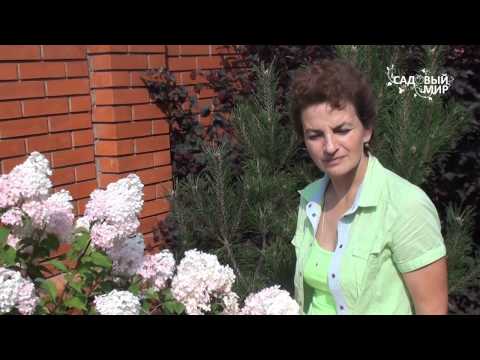
A breakthrough in recent years can be called the variety series, whose representatives bloom on young shoots of the current year. Even when the upper buds freeze, the remontant bush will release fresh shoots with inflorescences. True, the flowering time will be somewhat postponed.
- 1. Endless Summer (Endless Summer - "Endless Summer") - a pioneer among the re-flowering hydrangeas. It is characterized by a powerful structure of a bush with a height of 1.5 - 2 m and abundant flowering. Bloom Struck cultivar (Bloom Strak "Striking flowering") has blue-blue shades of globular inflorescences; Blushing Bride (Blushing Bride - "Blush Bride") blooms white; The Original (Original) - the ancestor of the series with sky blue flowers. Twist-and-Shout (Twist and Shout - "Twist and shout"), named after the song of the same name by the Beatles, bears many flat umbrella-shaped inflorescences with large flowers at the edges. Small flowers are lilac, and large sterile ones are pink.
- 2. Everbloom (Everbloom - "Eternal flowering") - a series of compact plants with large capitate inflorescences of four shades: Blue Wonder (Blue Wonder - "Blue miracle"); Pink Wonder (Pink Wonder - "Pink Wonder"); Red Wonder (Red Wonder - "Red Wonder"); White Wonder (White Wonder - "White miracle").
- 3. Forever & Ever (Forever and Ever - "Forever") are distinguished by strong bushes about 1.2-1.4 meters high with rigid, straight shoots. The inflorescences are large, ball-shaped. Blue Sensation (Blue Sensation - "Blue sensation"). Peppermint (Peppermint - "Peppermint") with striped white-pink flowers. Pink Sensation - "Pink Sensation" - soft pink tones. Pistachio (Pistachio - "Pistachio") is the most unusual variety in terms of its multicolored flowers, the raspberry-green flowers of which, when acidified, show a blue-violet center. Red Sensation - "Red Sensation" looks wonderful in the garden thanks to its beautiful pink-red hue. White Sensation - "White sensation".
- 4. You & Me (Yu and Me - "You and me") - a delicate series with double flowers in the shape of stars: Forever, Inspire, Love, Passion, Romance, Together. They differ in the configuration of the petals. For example, in the "Love" variety they are rounded, while the "Inspire" has long, pointed petals, slightly twisted like a propeller.
- 5. Doppio Bianco (Doppio Bianco - "Terry white"), or Wedding Gown (Weddin Gown - "Wedding dress"). Delicate hydrangea with an abundance of terry inflorescences. Unpretentious and low (up to 1 m).
Certain varieties of the traditional series tend to be remont from time to time. Conversely, if a plant of the always flowering type is weakened due to certain conditions, it may not bloom at the expected moment.
Unlike previous species, large-leaved hydrangea plants need a mandatory winter shelter.
An alternative way of cultivating large-leaved varieties is to plant them in containers with a special substrate. In this case, with the onset of autumn cold weather, the bush is cleared of leaves and taken out into a dark, cool room with a temperature of 0 to +5 degrees until spring. Thanks to this method, it becomes possible to grow even varieties belonging to the 7th zone of winter hardiness, and it simplifies the control of soil acidity.
The basic principles of hydrangea agricultural technology include:
- acidic soil;
- partial shade, protected from strong winds;
- abundant watering;
- pruning;
- insulation for the winter (if necessary).
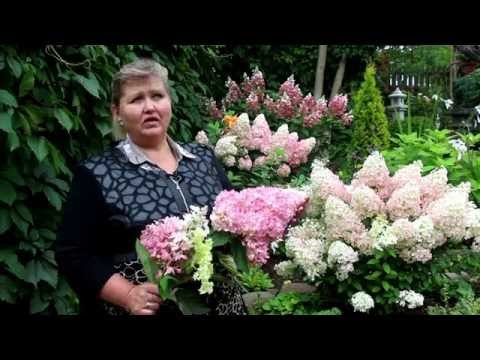
Observing these simple rules, you can achieve abundant flowering and plant endurance:
- 1. The substrate for planting hydrangeas must be acidic, breathable, nutritious, moisture-consuming. In an acidic environment, bacteria live, which provide food for the root system of calcephobic plants (those who love an acidic environment). When the soil is alkalized due to watering with tap water or fertilizing with phosphorus, it is sick, chlorosis of the leaves is manifested. To regulate acidity, it is recommended to add high peat when planting. It has a light brown color and acidity values of 2.5 - 4. Water for irrigation can be acidified with citric acid (1 tablespoon per 10 liters of water), and the ground around the plant can be mulched with coniferous needles (litter). Treelike hydrangeas are more tolerant of neutral or slightly alkaline soils than varieties of other groups. On heavy soils and areas with stagnant water, drainage is mandatory.
- 2. Paniculata and Bretschneider hydrangeas are more tolerant to solar exposure. But, like other species, they will be more comfortable provided that the sun illuminates the area only in the morning hours. Afternoon heat is bad for flowering. A good option would be to place hydrangea bushes in a loose (openwork) shade, under the trees.
- 3. Having succulent leaves, hydrangea is especially sensitive to lack of moisture. Therefore, plants should be provided with daily (in the absence of rain) watering. It is good to combine it with dressings that are carried out on wet soil.
- 4. Pruning a hydrangea plant consists in removing weak, thin and too old, dry shoots. It is usually carried out in the spring, before bud break, in order to avoid the active release of plant sap through the slices. The principle of pruning is as follows: the fewer shoots remain and the stronger they are, the larger the inflorescences will be. In no case are living apical buds cut off, because it is from them that the main peduncles will come out. By pruning, you can adjust the shape of the bush without forgetting the rules that are common to most woody plants.
- 5. The most preferred method of hiding hydrangeas for the winter is the air-dry method. It is most often applied to large-leaved varieties. Before frost, the leaves are removed from the bush, the plant is tied, carefully bent down and covered with a frame, on top of which agrofibre is placed in several layers, then a polypropylene and warm cloth (for example, a piece of an old carpet or blanket).
Hydrangea is one of the few perennials that have such a long decorative period and a wide range of color shades. New varieties with improved characteristics are developed annually. This culture deserves special attention as a unique beauty element of landscape architecture.
